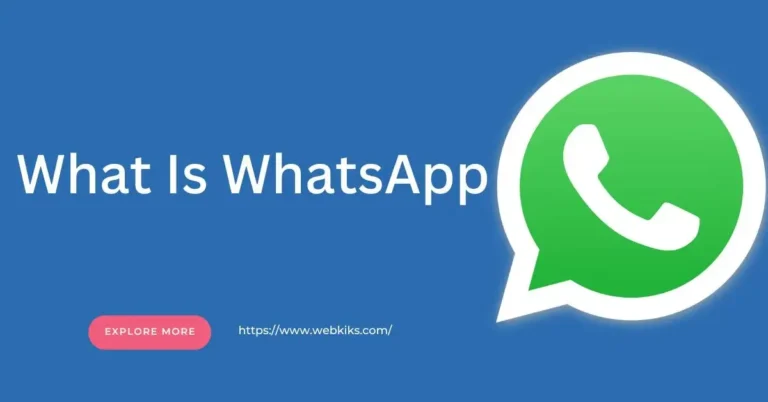Wireless charging, also known as inductive charging, operates through electromagnetic fields to transfer energy from a charging pad to a device without needing physical cables. So, the process begins when an alternating current passes through a coil in the charging pad, generating an electromagnetic field.
So, this field induces a current in the coil inside the device, which is then converted back into electrical energy to charge the battery. But, it is like a dance between coils: one sends out power, and the other receives it. Therefore, this technology offers convenience and eliminates the hassle of tangled cords.
Moreover, it is becoming popular in various devices, from smartphones to electric toothbrushes. Despite its advantages, wireless charging usually takes longer than traditional wired charging and can be less efficient. However, advancements in technology are continuously improving its speed and effectiveness.
What Is Wireless Charging?
Wireless charging is a revolutionary technology that allows devices to recharge without the need for physical connections. However, instead of plugging in a cable, devices are placed on a charging pad or stand, and power is transferred wirelessly through electromagnetic fields.
So, this method offers convenience and eliminates the hassle of dealing with tangled cords, making it a popular choice for charging smartphones, smartwatches, and other compatible devices.
At its core, wireless charging operates through electromagnetic induction, where an alternating current passing through a charging pad creates a magnetic field. But, this field then induces an electric current in a coil inside the device, which is converted into power to charge the battery.
While wireless charging may take slightly longer than traditional wired charging, its ease of use and growing compatibility across a range of devices make it an increasingly sought-after feature in today’s tech-savvy world.
Types Of Wireless Charging Devices
There are several types of wireless charging technologies available today.
Inductive Charging
The first type of wireless charging is inductive charging. So, it uses an electromagnetic field to transfer energy between coils in the charger and the device, enabling convenient charging without cables.
How Does Qi Wireless Charging Work?
Qi wireless charging works to utilize electromagnetic induction to transfer power from a charging pad to a compatible device. First, the charging pad generates an electromagnetic field when connected to a power source.
Next, a device with Qi wireless charging capability, such as a smartphone, contains a coil that converts the electromagnetic field into electrical energy, which charges the device’s battery.
As the device is placed on the charging pad, the electromagnetic field induces a current in the coil, initiating the charging process. This technology enables convenient and cable-free charging for various devices, promoting ease of use and flexibility in charging locations.
Resonant Charging
Second, the wireless charging type is resonant charging. It is good to allow for greater distance between the charging pad and the device by using resonant inductive coupling. Moreover, it is making it ideal for charging multiple devices simultaneously on a single pad.
How Does Wireless Charging Work With Resonant Charging Method?
Resonant wireless charging operates by employing resonant inductive coupling to transfer power from the charging pad to the device.
First, the charging pad generates an oscillating magnetic field at a specific frequency.
Then, the device, equipped with a compatible coil, resonates at the same frequency, efficiently capturing the energy and converting it into electrical power.
Unlike inductive charging, resonant charging allows for greater spatial freedom between the pad and the device, enabling charging over longer distances and through obstacles.
This technology facilitates the simultaneous charging of multiple devices on a single pad, providing convenience and versatility for users.
RF Charging
Third is radio frequency (RF) charging. So, it uses radio waves to transfer power to devices within a certain range. Moreover, it provides flexibility in placement and potentially enables charging while in motion.
How To Use RF Wireless Charging?
RF wireless charging functions by transmitting power through radio waves to charge compatible devices. Initially, a transmitter emits radio waves that carry energy across a designated area.
Then, receivers within range capture these waves and convert them into electrical power to charge the device’s battery, offering flexibility in charging location and the potential for charging while on the move.
Magnetic Resonance Charging
It is magnetic resonance charging, which can charge devices even when they’re not directly aligned with the charging pad. Moreover, it offers greater convenience and flexibility. Each type of wireless charging has its unique advantages and applications, catering to different user needs and preferences.
Main Reasons To Use Wireless Charging With Qi Technology
There are eight main reasons to embrace wireless charging.
- Firstly, it offers convenience by eliminating the need for tangled cords, allowing for easy placement of devices on charging pads.
- Secondly, it reduces wear and tear on charging ports, prolonging the lifespan of devices by minimizing physical damage caused by repeatedly plugging and unplugging cables.
- Thirdly, wireless charging provides versatility, as it supports a variety of devices, from smartphones to wearable gadgets.
- Additionally, it promotes a clutter-free environment by reducing cable clutter on desks and countertops, enhancing aesthetic appeal.
- Moreover, it enhances safety by eliminating the risk of tripping over cables, especially in busy or crowded spaces.
- Furthermore, wireless charging is environmentally friendly, as it reduces the production and disposal of traditional charging cables, contributing to a greener planet.
- It also offers faster and more efficient charging with the advancement of technology, providing a convenient power-up solution for busy lifestyles.
- Lastly, it promotes innovation and integration into various products, driving the future of wireless technology forward.
Wireless Charging Functions With Qi Technologies
Wireless charging functions seamlessly with Qi technology, a standard developed for inductive charging. Devices equipped with Qi technology can charge wirelessly by simply being placed on a Qi-compatible charging pad or stand.
One key advantage of Qi technology is its widespread adoption across a range of devices, including smartphones, smartwatches, and even certain vehicles. Additionally, Qi-certified products undergo rigorous testing to ensure compatibility and safety, providing users with peace of mind during charging.
This technology employs electromagnetic fields to transfer power from the charging pad to the device’s battery, ensuring efficient and convenient charging. Moreover, Qi technology continues to evolve, with advancements in efficiency and speed, promising even faster and more reliable wireless charging experiences for consumers worldwide.
How Does Wireless Charging Work With Qi Technologies Device?
Qi technology seamlessly integrates into furniture and accessories, making it incredibly convenient to incorporate into various aspects of daily life, from smart furniture to cars and beyond.
As one of the most globally supported and accepted wireless charging standards, Qi technology is integrated into a wide array of devices and environments worldwide.
With backward compatibility, Qi2 technology ensures compatibility with older Qi versions on both Android and iOS devices, ensuring a seamless charging experience across different devices.
When it comes to safety, Qi sets the standard for wireless chargers, incorporating the latest safety mechanisms and cutting-edge technologies to prevent device damage and ensure user safety.
With support for fast charging capabilities, the Qi standard enables swift charging, reducing the time spent waiting for devices to power up.
Above all, wireless charging with Qi technology offers unparalleled ease of use, allowing users to simply place their devices down and eliminate the hassle of scrambling for cables.
Conclusion
In conclusion, wireless charging revolutionizes the way we power our devices. By harnessing electromagnetic induction, charging pads transmit energy to compatible devices, eliminating the need for cumbersome cables.
This technology offers unparalleled convenience and flexibility, enabling users to charge their devices effortlessly at home, in cars, airports, and other locations.
As wireless charging continues to evolve, it promises to further enhance our daily lives by providing seamless and efficient power solutions for the future.
Frequently Asked Question
How Does Wireless Charging Work iPhone?
Wireless charging on an iPhone works through induction technology. When the iPhone is placed on a compatible charging pad, an electromagnetic field is generated. So, this field induces a current in the coil inside the iPhone, which charges the battery. However, this process eliminates the need for cables, providing convenience and ease of charging for iPhone users.
How Does Wireless Charging Work Samsung?
Wireless charging on Samsung devices operates similarly to other devices using induction technology. When a Samsung device is placed on a wireless charging pad, electromagnetic fields are generated.
So, these fields induce a current in the device’s coil, charging its battery. Thus, this method eliminates the hassle of cables, offering users convenience and ease when charging their Samsung devices.
How Does Wireless Charging Work Android?
Wireless charging on Android devices functions through electromagnetic induction. When an Android device is placed on a compatible charging pad, it triggers the generation of an electromagnetic field.
Therefore, this field induces a current in the device’s coil, facilitating the charging of its battery. Consequently, users enjoy the convenience of cable-free charging, making the process hassle-free and straightforward.
How Does Wireless Charging Work Physics?
Wireless charging operates based on the principles of electromagnetic induction in physics. When a device with wireless charging capability is placed on a charging pad, an electromagnetic field is generated.
It induces an electric current in the device’s coil, converting electromagnetic energy into electrical energy, which charges the device’s battery. Hence, this process eliminates the need for physical connections, offering convenience and flexibility in charging various devices.
How Does Wireless Charging Work In A Car?
Wireless charging in a car functions similarly to other wireless charging methods. A charging pad or dock is installed in the car, typically in a convenient location.
When a compatible device is placed on the charging pad, electromagnetic induction occurs, transferring power wirelessly to the device’s battery. Overall, this allows drivers to charge their devices hands-free while on the go, enhancing convenience and safety during travel.
How Does Wireless Charging Work At Airport?
At airports, wireless charging operates through induction technology. Charging stations equipped with charging pads are available for travelers to use. When a compatible device is placed on the charging pad, then its electromagnetic fields are generated, inducing a current in the device’s coil and charging its battery. Hence, it provides travelers with a convenient way to charge their devices while waiting for their flights, ensuring they stay connected throughout their journey.






